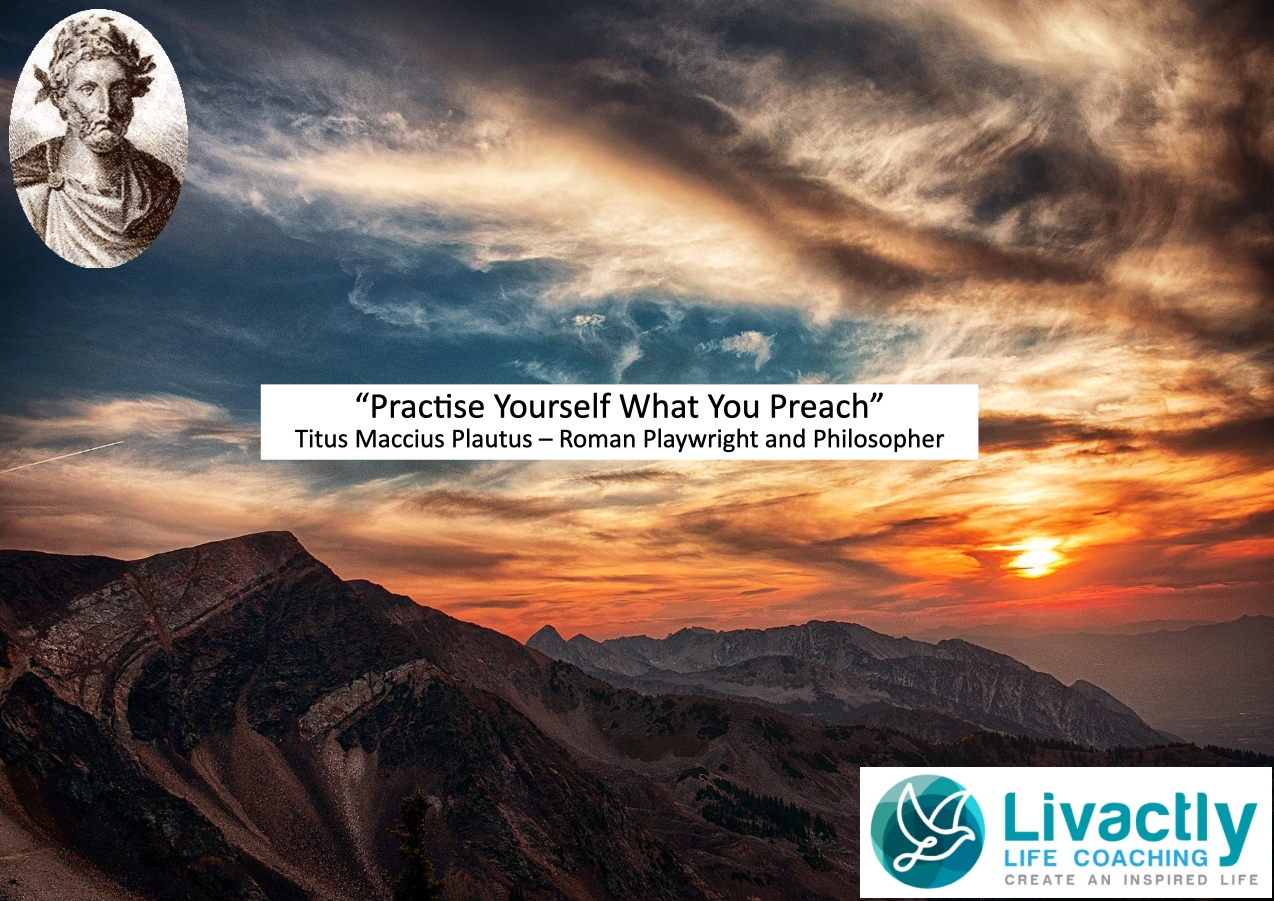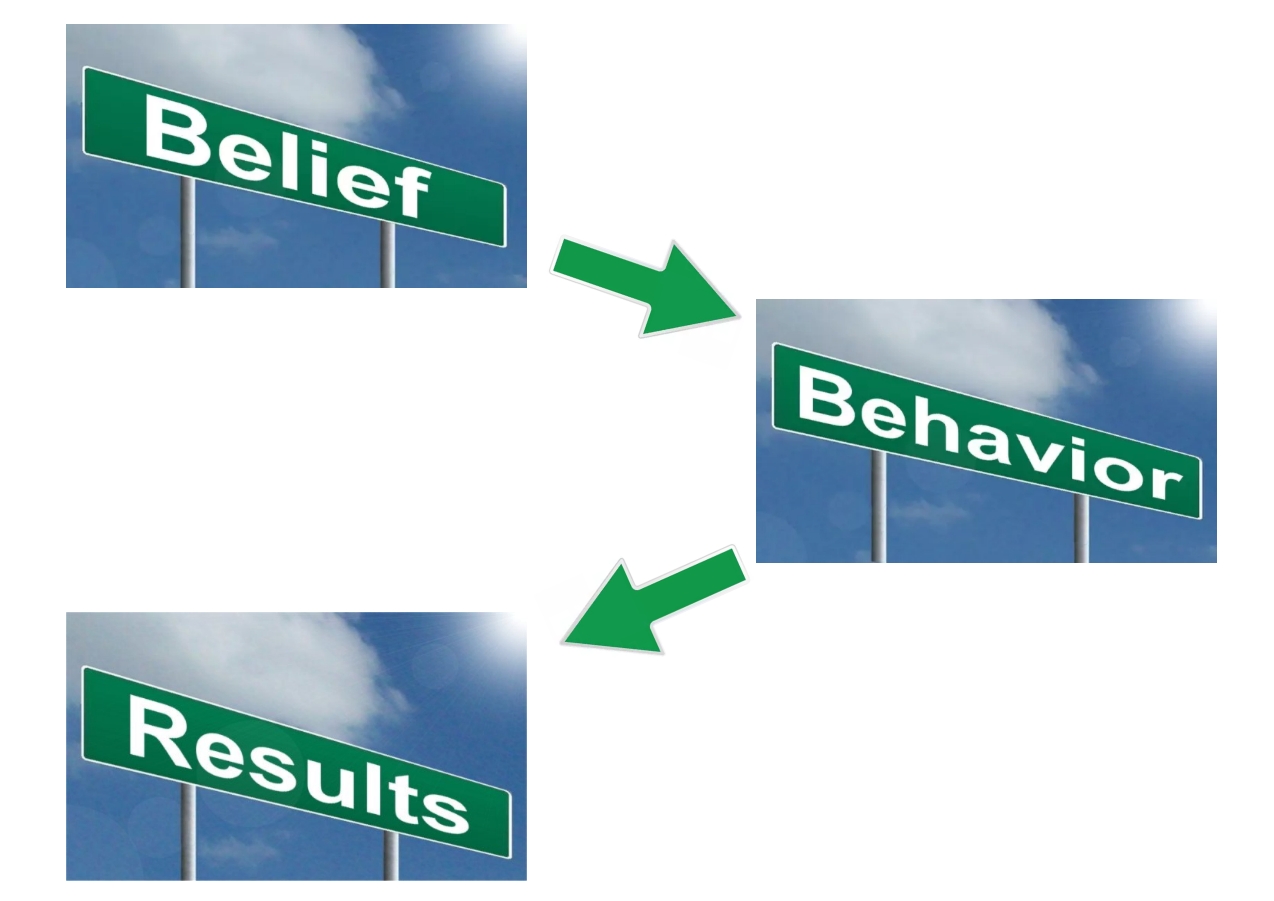
Have you ever heard the saying ‘Practice what you preach?”
Sure, it’s certainly a common enough saying, but what does it really mean?
When it comes to getting the results you want in life, there is a word called ‘Praxis’, which means turning your thoughts and beliefs into actions and behaviours, that eventually lead to results.
The way we think and believe always affects our actions.
So if there is some particular outcome we want, first we need to believe that we can get it, and second, we need to take the required action in order to get it.
It’s also to be noted that if you don’t believe something, or if you have a counter-belief, then there’s no way you will take any action to achieve it.
Indeed you may even take self-sabotaging actions to stop yourself achieving it.
If you have deep-seated beliefs that are antagonistic to a desired outcome, then likewise you will not achieve it unless you can overcome these counter-beliefs.
Thus, in order to obtain a desired outcome, you need to make sure your fundamental beliefs align with it.

How do you change your beliefs?
Changing beliefs is not an overnight endeavour. It can happen through highly charged, emotional experiences.
These are the types of experiences that members of religious cults undergo, as well as members of brainwashing programs like the MKUltra program that was run by the CIA in the 1950’s and 60’s.
This is not the most pleasant or ethical way to do it, and rarely does it ‘stick’.
A more practical, ethical and permanent way to change your beliefs is to use what is called ‘spaced repetition.’
Essentially, this process requires you to write out the new belief and then read it out aloud regularly, for instance 2 to 3 times per day.
For instance, you write out a goal on a card and keep it in your pocket - to take it out frequently and read.
The repeated exposure to the idea ensures that the idea is pretty much at the forefront in your mind.
If there are any counter-beliefs, you will experience some internal conflict, but continuing to read out the new goal will eventually extinguish these counter-beliefs.
It should be pointed out that spaced repetition is not just rote learning or memorisation, although this is a side-effect.
With each repeat of the information, your mind is able to grasp new insights into the belief, leading to greater understanding overall.
Another method of changing your beliefs is to undergo a self-enquiry process. You might like to follow the steps contained in this article or this video.

Take one for the team... and the family
All of the above applies as much to groups of people, including a family or a work team, as it does to the individual.
In order for a team to function properly, each member of the team must hold the same beliefs regarding the team’s purpose and modus operandi.
If just one member is not in alignment, they probably do not belong on the team, or they need to be reminded of the team's purpose and to align with that purpose.
However, if they are willing to change, it’s the job of the team leader to facilitate this in the best and easiest way possible, using the technique outlined above.
With a family it is slightly different. In a family, beliefs are passed from member to member, and largely this results in a harmonious family life.
However, as children grow up they begin to question those beliefs as they come into contact with experiences outside the family.
A good parent needs to be tolerant if a child decides to believe something different to what they were told by their parents.

Praxis - Converting Belief Into Results
Praxis: The power of belief coupled with behaviour
Ultimately, the power of beliefs is mirrored in people’s behaviours.
If you want different results, then you need to adopt different beliefs and different values that serve those results, then take the ACTION required to achieve those results.
